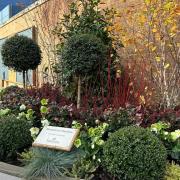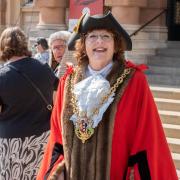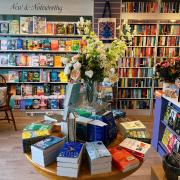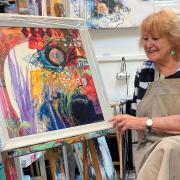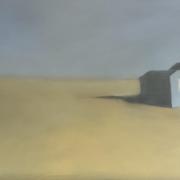If there's an ancient craft that should be revived for the 21st century, basket making is it. Attractive, strong, versatile and sustainable, wicker baskets were once more than decorative accessories - they were essential to daily life
Wouldn't it be wonderful if the outlawing of plastic shopping bags led to a revival of that humblest of crafts, basket making? It was once an important industry, and basket ware was essential to daily life.
There may not be much evidence of it now but Suffolk was once a traditional area for growing willow, an ideal source of wicker for weaving into baskets, and willow, or osier, beds were common in many of our villages and towns. That changed with the arrival of cardboard and plastic, the decline of sea fishing from our coast and changes in farming. But could it return?
The craft of basket making is one of the oldest in the world. Weaving wicker is the oldest furniture making method known to history, dating as far back as 5,000 years ago and for centuries baskets were indispensable for work and in the home. In fishing towns such as Lowestoft and Southwold, they were essential to fishermen, especially during the fishing boom of the 19th century, when baskets brimming with catches such as herring were a common sight.

Fruit orchards were also far more abundant, until the post-war years, and local makers earned a living supplying baskets for apple and cherry picking. Most of the fresh produce from the countryside was moved by rail into towns and cities in wicker baskets and hampers. At home, baskets were used to hold washing, shopping, babies (Moses baskets) and picnics among other things.
READ: real life Game of Thrones at Sutton Hoo
Willow will grow almost everywhere, but deep, moist, well drained soil, in full sun are the optimum conditions for the osiers to grow in straight ‘rods’ or ‘withies’ suitable for basket making. Land not fit for cereal crops was often used for osier beds. Once planted the willows need three years to become established. Then each winter, when the tree is dormant, the withies are harvested by cutting as close to the original base as possible. They're bundled and loosely tied, then dried in an airy shed for up to four months. The willow is then graded and soaked until the branch can be bent without cracking, at which point the willow needs to be woven as quickly as possible.
Basket making was a cottage industry. In 1570 it was so important that basket makers were organised into guilds with St Julian as their patron. Even today, the Worshipful Company of Basket Makers actively promotes the teaching and practice of traditional basket making. In Suffolk in 1844, Ipswich and Bury St Edmunds had six basket makers, Stowmarket four and Hadleigh three. The village of Wickham Market was quite a hub for basketry, especially baskets for egg collecting and fruit picking, recorded in the village sign which depicts osier beds once seen by the River Deben.

Ronald Blythe, author of Akenfield, once commented that “Osiers were once part of the country way of life.” His uncle, George Pipe, was a member of a longstanding family of basket makers at Grundisburgh and rented several osier beds on an estate in Easton, which belonged to the Duke of Hamilton. George employed eight or nine men throughout the year in double digging and replanting the beds and osier sets. Some Grundisburgh residents have fond memories of the last surviving members of the Pipe family, especially Joe, who along with his sisters, was still making baskets in the early 1970s.
When newly married Brenda Garrard moved to Grundisburgh in the early 1960s, it was Joe Pipe who wove the wicker fencing around her garden. Brenda also recalls how the Pipes would soak the willow branches in the river Lark, which flows through the village. “I can remember talking to one of the Pipe sisters as she worked," says Brenda. "I found it fascinating to watch her, and I still remember the lovely smell of the baskets which filled their workshop.”


Before moving to Grundisburgh, Katherine Smith lived at neighbouring Hasketon in the early 1970s where the Pipe family had an osier at Lowood. Katherine recalled how delighted she was that the Pipes, who she describes fondly as “sweet, Suffolky people” not only made a front basket for her bicycle, but also a wicker child’s seat to carry her two-year-old daughter. Shopkeeper Rosie Venn, who has had a connection to Grundisburgh for 50 years still has a log basket made by Joe Pipe.
I called in to see one of Suffolk’s few remaining basket makers, Peter Dibble, at his osier in Linstead Parva near Halesworth. Peter has been basket making for 25 years, and was taught willow growing by his father-in-law, Will Berry, from whom he took on the osier beds in 2005. Peter’s wife, Dinah, was busy weeding between the young willow rows, a crucial task, explains Peter, since willows will not tolerate competition until they are big enough to shade out the weeds.

All Peter’s willows are organically grown. In the sheds, where the willow branches were in their various stages of soaking and drying, I was surprised to discover how many varieties and gorgeous colours and hues there were - greens, golds, reds and blacks, with quaint names such as Brittany Green, Dickies Meadows, Elegantissima, Flanders Red, and Black Maul. They're just some of the many varieties Peter has introduced over the years.


As well as baskets Peter makes fence panels, hampers, bicycle baskets, kitchen storage baskets, anything he is asked for, including coffins and even wicker baskets for modern irrigation pumps to filter out leaves and other debris. It takes him less than a day to complete a fence panel. “Practice and speed are what make you good," he says. "To make a living you need to be fast.” Peter’s father- in- law, Will, was taught by one of the last surviving members of another long-standing basket making family, the Daines of Dennington. A quote from one of the Daines family’s memoirs alludes to the justifiable pride and dedication they had for their craft, and the environment which they held in affection and respect.
“Country folk lived side by side to nature, and although basket making was the trade, their material had to be cut in the woodland flora and fauna and were as familiar to them as their kith and kin. They knew the habitats of every living creature, whether fur or feather. We never advertised, for good work does not need it, and it is a pity that so much of our currency goes overseas for articles that could be made here. Nothing need be scattered and lost while there were baskets.”
SUBSCRIBE: Get Suffolk magazine every month a discover more about our great county








